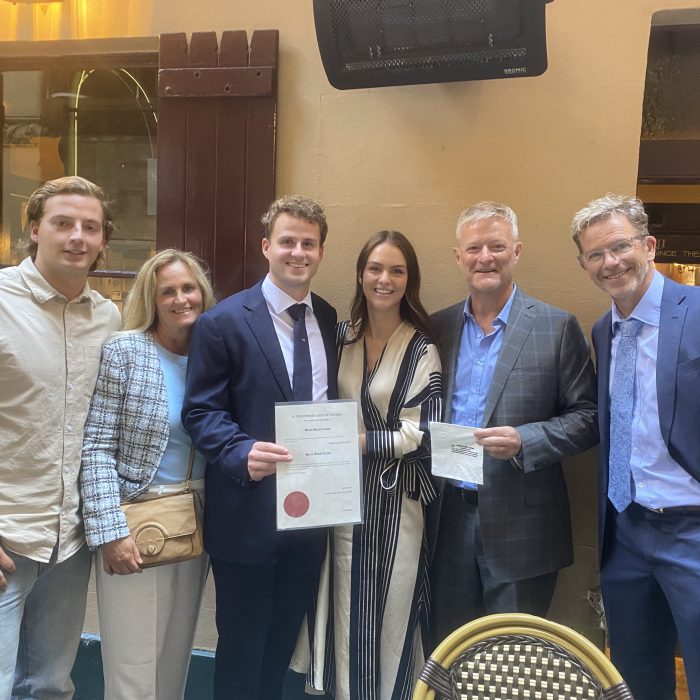Here’s a novel way to promo: just fake it.
On 4 November 2022, Drake and 21 Savage released their collaborative album, Her Loss. To promote the album, the pair embarked on what appeared to be a typical promo tour comprising:
- an NPR Tiny Desk Concert;
- an interview on Howard Stern;
- a performance on SNL; and
- a feature article on Vogue with a companion ‘In My Bag’ video.
Here’s Drake and 21 Savage on the cover of Vogue, as promoted by the pair on Instagram:

And here’s the Vogue issue being promoted on posters placed throughout NYC and elsewhere:

On 31 October 2022, copies of the Vogue issue were given away to members of the public in several US cities, a move arranged by the artists’ PR agency to celebrate the album launch.
All of this is quite standard… except one tiiiiiiiiny thing: none of these events was a genuine PR move. That’s right: they were stunts conceived and executed without the consent or awareness of NPR, Howard Stern, SNL or Vogue. The counterfeit issues of Vogue were professionally re-printed copies of the October 2022 edition with various modifications including a substituted cover featuring the rappers.
As anyone who’s ever met a toddler would know, sometimes cheeky monkeys get the banana. Howard Stern thought the fake press tour was impressive (“I should’ve done it”) and NPR invited the duo to feature on a legit Tiny Desk Concert (“Let’s do it forreal tho”). So convincing were the videos that the global media reported them like regular news. Reports of the magazine giveaway whizzed around on social media as you’d expect they would.

But Drake and 21 Savage weren’t just being cheeky. As world-famous rappers, they’ve got the funds, PR firepower and (should they require it) legal resources to launch promotional material that cuts through and complies. And Vogue publisher Condé Nast evidently agrees: it has sued the rappers for using the magazine’s name without their consent and for producing, disseminating and publicising what they call a counterfeit issue of their magazine.
While we’ll watch the Vogue proceedings with interest, we wouldn’t be surprised if it ends with a whimper (confidential settlement) rather than a bang (damages to the tune of US$4m at minimum).
The IP issues
The complaint filed by Conde Nast in the US District Court Southern District of New York alleges trademark infringement/counterfeiting, false designation of origin, unfair competition, dilution, false advertising and violation of the New York General Business Law.
If the matter were heard here in Australia, the odds would be firmly against Drake and 21 Savage. (Really resisting the urge to quote a lyric right now.) Condé Nast could bring tandem actions for passing off, misleading or deceptive conduct, false representations (rough equivalents to unfair competition and false advertising), trade mark infringement and copyright infringement.
Passing off and misleading or deceptive conduct
To establish passing off and misleading or deceptive conduct, Condé Nast would need to prove that the rappers’ conduct misled the public into assuming that they actually appeared in Vogue magazine. It would also argue that the “counterfeit” issues were calculated to, and did, cause consumers to assume that the publication had selected – and in so doing endorsed – the artists for profiling. Seeing as the Vogue stunt was calculated to deceive, these would be straightforward arguments to run. The rappers would likely argue that any confusion was temporary, and was dispelled well before consumers actually purchased Her Loss. But that’s a shaky argument: a long line of Australian case law confirms that consumer confusion need not subsist at point of purchase.
Drake and 21 Savage weren’t just being cheeky. As world-famous rappers, they’ve got the funds, PR firepower and (should they require it) legal resources to launch promotional material that cuts through and complies.
Trade mark infringement
To establish trade mark infringement, Condé Nast would probably rely on this Australian trade mark registration for VOGUE (stylised) which covers PR, endorsement, entertainment, publishing and music-related services, and this registration which (arguably) covers downloadable musical recordings. Given that the rappers were using the VOGUE brand to promote their album, we’re talking use of an identical mark in relation to identical goods and services: straight up trade mark infringement. The rappers might seek to attack Condé Nast’s earlier registration for non-use, but the Registrar has a broad discretion to preserve an unused registration: with VOGUE being a household name, the rappers’ “unclean hands” would probably be determinative. Even if Condé Nast’s registration were pruned back a bit, it would still likely be preserved in respect of services that are similar to musical recordings and entertainment services.
If Condé Nast tookthe view that the rappers were also providing magazines in the course of trade (as distinct to using them purely as a vehicle to distinguish their musical entertainment services) it could also rely on this 1914 registration for VOGUE (stylised) covering magazines, which most definitely isn’t vulnerable to non-use attack.
Cheeky call-out to Condé Nast: to avoid the non-use risk, you should absolutely consider expanding your suite of defensive trade mark registrations. Defensive registrations are immune to non-use attack.
Copyright infringement
And then there’s copyright infringement, the darling of IP claims. The counterfeit magazines were reproductions of the October 2022 edition of Vogue. So their contents clearly infringed Condé Nast’s copyright in the underlying literary works (plus any third party copyright works e.g. advertisements).
Condé Nast might also zero in on the fake covers, arguing that the rappers infringed copyright in the layout and configuration of its iconic Vogue covers. (The Vogue Logo itself was copied too, but probably isn’t a copyright work and if it is, might be out of copyright). In Australia, a party can sue for reproduction of layout and configuration, even where specific text and pictorial elements are changed. While Condé Nast could make good this claim, it’s probably not their strongest line of attack. That’s because the look and feel of Vogue’s cover follows the golden rules of modern fashion magazine cover design: big bold masthead, main image (a photograph, mainly unobstructed), lead article title in large font and a couple of supporting article titles in smaller font situated around the main image.
Putting aside the question mark attaching to the magazine covers, Drake and 21 Savage’s conduct would certainly be actionable under Australian law.
Let’s see how they fare in the US proceedings.






